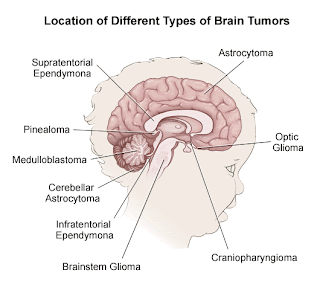New guidelines released to help doctors treat younger patients age-appropriately
Though acne has long been viewed as a teen phenomenon, dermatologists have been tending to an ever-younger patient pool, a new preadolescent reality that many experts link to a trend toward an earlier onset of puberty.
Now, a team of physicians has put together a new list of treatment recommendations that they hope will lead to a better age-appropriate standard of care for children as young as 7.
The guidelines address issues such as when over-the-counter creams should be used versus prescription medicines (including antibiotics, retinoids and, for girls in some cases, hormone therapy). They also discuss how to help young patients stick with their treatments and deal with the emotional effects of acne.
"As the initial start of puberty is occurring earlier than in the past, we needed to define the age ranges and concerns regarding the different groups that make up pediatric acne," said guideline co-author Dr. Andrea Zaenglein, a pediatric dermatologist and professor of dermatology and pediatrics at Penn State/Hershey Medical Center.
She said the goal is "to provide pediatricians and anyone who cares for children with acne with specific guidelines for the care of their patients."
Zaenglein and her colleagues presented their recommendations, which have been endorsed by the American Academy of Pediatrics and published in Pediatrics, at the recent American Academy of Dermatology annual meeting in New York City.
The team defines preadolescent acne as cases occurring among children aged 7 to 12.
The guideline authors pointed out that preadolescent acne is not usually a cause for undue alarm, typically involving the onset of whiteheads and blackheads in the forehead, nose and chin region. More serious inflammatory lesions are not commonly seen among these younger patients, and scarring -- though a concern -- is rare.
The new recommendations advise doctors to first treat cases of preadolescent mild acne with over-the-counter benzoyl peroxide. Only when such products fail to do the trick -- or when children are afflicted with larger-than-usual acne zones -- are age-appropriate oral antibiotics or retinoids to be added to the treatment.
Children should also be instructed to adopt good cleansing protocols, such as washing acne-prone areas twice daily with a nonabrasive pH-balanced cleanser.
Consistent monitoring alongside treatment is also suggested even once acne is brought under control, as the onset of preadolescent acne can be an early sign of more serious acne problems as a child ages into a teen and young adult.
While acknowledging the need to identify the problem and seek appropriate treatment, Zaenglein stressed that "it is important that parents do not panic" because preadolescent acne is readily controllable.
"Acne is very unlikely to be a sign of a hormonal abnormality in that age range," she said, "although your doctor should confirm with a thorough history and physical exam."
But what explains the preadolescent acne phenomenon in the first place?
The jury is still out, said Dr. Lawrence Eichenfield, chief of pediatric and adolescent dermatology at the University of California, San Diego (UCSD), and himself a member of the guideline team.
"There are many ideas as to why this is happening," he said. "It is true that while back in the 1990s it was not that uncommon to see the onset of puberty among 8- or 9-year-olds, there is good data that children are, in fact, going into puberty now about one year earlier than was the case 20 years ago," Eichenfield explained.
"So it could be about hormones, about nutrition, about the obesity epidemic," he suggested. "But I would call these ideas, not even theories. We really just don't know what the reason is. But what we do know is that it's not happening just in the U.S. This is a worldwide phenomenon," he added.
"Which is why I'm very pleased that now, for the first time, we have evidence-based guidelines for the treatment of pediatric care," Eichenfield said. "And that means that parents should feel comfortable that their pediatricians and dermatologists will now have consistent and reliable ways to treat children, and minimize the negative physical and psychological impact that acne can come to have over a patient's lifetime."
For her part, Dr. Sheila Friedlander, a pediatric dermatologist and clinical professor of pediatrics and medicine at UCSD, expressed hope that the new recommendations will help caregivers guide parents away from the "perfect storm of anxiety" that can arise when confronted with preadolescent acne.
"As long as no other signs of a problem exist, such as significant armpit/groin hair or breast development, we consider this 'early acne' a normal event," she said.
"Therefore, health care givers must be prepared to provide parents with an appropriate approach to acne," Friedlander added, agreeing that most cases are eminently treatable when handled properly.
SOURCES: Andrea Zaenglein, M.D., FAAD, pediatric dermatologist, and professor, dermatology and pediatrics, Penn State/Hershey Medical Center; Sheila Friedlander, M.D., pediatric dermatologist, and clinical professor, pediatrics and medicine, department of medicine, University of California, San Diego; Lawrence Eichenfield, M.D., chief, pediatric and adolescent dermatology, University of California, San Diego; July 31-Aug. 4, 2013, American Academy of Dermatology annual meeting, New York City; May 2013 Pediatrics










.jpg)


















.jpg)